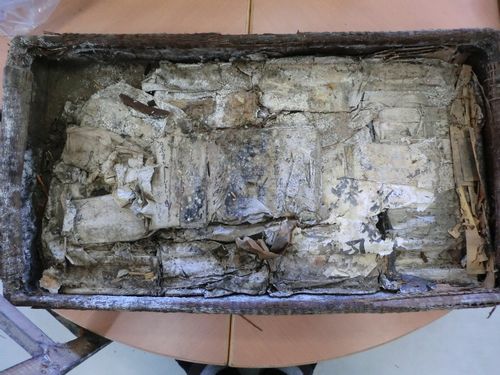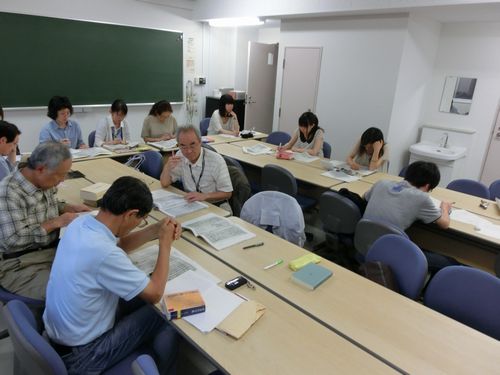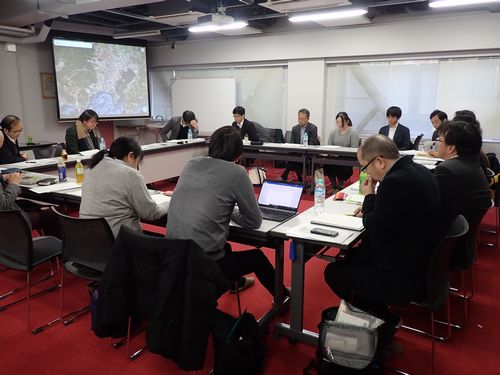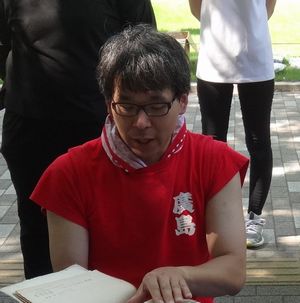The lessons of the Tohoku disaster: Rescue operations of historical and cultural materials take a new turn
Reports of torrential rains, earthquakes, and other natural disasters causing blackouts, destroying homes, or otherwise depriving people of the basic infrastructure of their lives are heard with increasing frequency in recent years. The damage extends to historical and cultural artifacts such as old documents, works of art, and folk implements that families have passed down in their homes over generations.
Dr. Masashi Amano, Research Associate Professor at the National Museum of Japanese History first became involved in the rescue of disaster-affected historical and cultural materials in the aftermath of the March 2011 Tohoku earthquake and tsunami. Those rescue operations, he believes, have influenced subsequent approaches to artifact and document conservation. We asked Dr. Amano to recount how the rescue operations unfolded, what lessons he learned, and how the preservation of historical resources has changed since the Tohoku disaster.
What kind of turning point was the March 2011 earthquake and tsunami for efforts to preserve historical materials in Japan?
The characteristic of the 2011 disaster is that instead of impacting limited areas, the tsunami brought a wide range of affected communities to the verge of being wiped out. Some local governments could not exercise their administrative functions, which obstructed their capacity to operate municipality-based rescue. This created the need for coordination such as having unaffected regions provide logistical support for impacted regions. Based on the initiatives devised at that time, inter-region and wide-area coordination has been developing as a key concept in subsequent disaster responses.
The 2011 earthquake and tsunami damaged countless cultural and historical materials. The affected items were diverse, ranging from historic documents and folk implements to works of art. No single discipline, such as history or folklore studies, could deal with everything that needed attention. Discussion of the need for multidisciplinary endeavors to rescue and preserve historical and cultural materials had been going on for some time, but the matter became urgent as a result of the 2011 disaster.
You mention that the tsunami affected many artifacts and documents in the 2011 disaster. Do those items differ in their degree of damage, compared with flood- or earthquake-affected materials?
Yes, there is a difference. First, water damage threatens items with the effects of corrosion, rot, or other deterioration. Furthermore, the 2011 tsunami wreaked damage by seawater. “Seawater” is the general term, but it is not just a matter of it being saltwater; seawater contains various components. For example, there was a paper mill on the shore at Ishinomaki, Miyagi prefecture, and many of the documents and other materials were coated with the pulpwood that washed over them. The tsunami also carried inland sediment from the seafloor—that’s another factor that must be considered.

Historical documents affected by the 2011 tsunami. (Photo taken March 26, 2012)
We have heard that local people were involved in cleaning the documents and artifacts affected by the 2011 Tohoku disaster. How was the experience working with the locals?
In 2011, I was a research fellow at Tohoku University while also working for the administrative office of an organization called the Miyagi Shiryō Net (lit., Miyagi Network for preserving Historical Materials). We put out a call for volunteers to clean the massive amounts of damaged historical documents that had been rescued. Most of the volunteers were residents of the Sendai city who previously had little connection to the academic field of history.
They nevertheless worked hard, and the results of their efforts were significant. Some of the regulars on the team took a personal interest in the content of the documents they were working with day in and day out. Respecting that interest, we decided to host study sessions once a week for about two hours from around 6 p.m. after finishing the cleanup tasks to help them learn how to read historic documents. This weekly activity went on for three years.
Apparently, I was a rather demanding taskmaster, but still, the participants took up the challenge with alacrity. After a year or so, they became quite good at deciphering the documents which were usually written with a brush in cursive, running-style calligraphy. They even went on decoding old writings on their own after that, some publishing the results of their efforts. The work of responding to the disaster ended up inspiring some local volunteers to discover—at their own initiative—the history of their area, and that was invaluable in increasing the ranks of those who will be the torchbearers of history and culture.

Scene from the “Reading Session of Pre-modern Japanese manuscripts,” a study group Dr. Amano started and held with volunteers after their document-cleaning tasks. (Photo taken July 9, 2012)
What lessons did you learn from working on the frontlines of document rescue operations following the 2011 earthquake and tsunami?
During the hectic days at the disaster site, I encountered countless instances where differences in fields of expertise and perspective resulted in clashes of values. They were sources of the stress and frustration I felt in that situation. Removing them for the sake of coming generations is a challenge that needs to be tackled by those who worked with the document rescue following the 2011 earthquake and tsunami, including me.
I am a scholar of history specializing in Japan’s early modern and modern history. But my experience with historical document rescue for the 2011 disaster drove home to me the need to consider, in earnest, what such conservation operations should be like. Notably, cross-disciplinary discussion becomes the norm under those conditions, and thus clinging to specific values could create an array of adverse effects. For instance, when considering preservation approaches for old documents, people specializing in history think of the place where the writing should be preserved because they value the historical information associated with the document, such as how it has been handed down and its value as a record. This contrasts with the approach of conservation science, which, based on the physical composition of the document, emphasizes developing an environment that is suitable for preserving the document. Despite sharing the same goal—keeping and protecting historical materials—the approach taken varies by field. While sharing these various values with one another, we need a forum to consider from diverse perspectives what an ideal preservation and transmission model should look like. And in that sense, we need to redefine material preservation as a multidisciplinary field in which scholars from different disciplines —history, conservation science, folklore studies, etc.—participate. It is essential for those people to regularly share the premises of their disciplines and develop an environment in which they can act in concert with the circumstances of specific locales or materials.
In January 2020, Dr. Amano organized a council where university personnel who work on document preservation and specialists in conservation science and restoration from the greater Tokyo area come together to exchange views (Council of Greater Tokyo Universities on the Preservation of Historical and Cultural Materials). Level-headed action is required in rescuing documents from disaster-affected areas. That need is behind Dr. Amano’s efforts to create an environment where a wide range of specialists can engage in dispassionate and regular discussion to explore new approaches to the preservation of historical materials.

Scene from first meeting of the Council of Greater Tokyo Universities on the Preservation of Historical and Cultural Materials, held on January 20, 2020 at Chiba University.
(Interview: Ayumi Koso)

Masashi Amano, Research Associate Professor of the National Museum of Japanese History
Amano specializes in the early modern and modern history of Japan as well as the preservation of historical materials. After graduating from Toyama University School of Humanities, he completed doctoral coursework at Tohoku University Graduate School of Arts and Letters. He assumed his current position in 2017 after working at the Tohoku University Center for Northeast Asian Studies as a research fellow and serving as assistant professor at the Tohoku University International Research Institute of Disaster Science.
